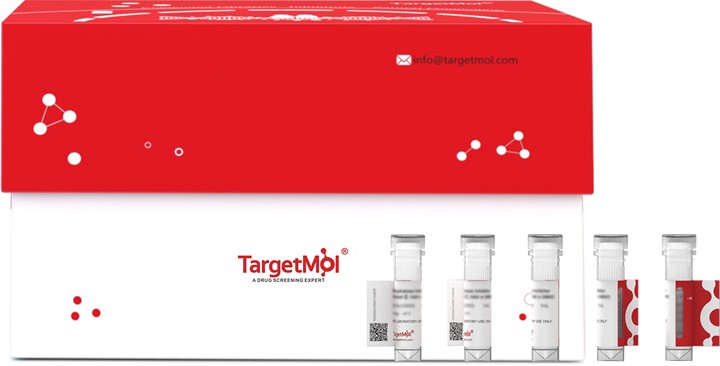 Your shopping cart is currently empty
Your shopping cart is currently empty
SYAP1 Protein, Human, Recombinant (His)
Synapse-associated protein 1 (SYAP1), also known as PRO3113 and BSTA, belongs to the synapse-associated BSD domain family, featuring three α-helices and two conserved tryptophan and phenylalanine residues located at the C-terminus. Expressed near neuronal Golgi and synaptic regions of cerebellar Purkinje cells, SYAP1 has been linked to intact sensorimotor control and general vesicular trafficking in neurons. SYAP1-deficient mice display impaired locomotor activity. In cultured adipocytes, SYAP1 facilitates mTORC2-mediated phosphorylation of protein kinase Akt1 and adipocyte differentiation. Chromosomal band Xp22.2 houses the human SYAP1 gene, a region associated with developmental delay and autism spectrum disorder. SYAP 1 may be a target for future cancer therapies as it was induced by tamoxifen in breast cancer cells sensitive to tamoxifen growth inhibition.

SYAP1 Protein, Human, Recombinant (His)
| Pack Size | Price | USA Warehouse | Global Warehouse | Quantity |
|---|---|---|---|---|
| 5 μg | $95 | 7-10 days | 7-10 days | |
| 10 μg | $155 | 7-10 days | 7-10 days | |
| 20 μg | $257 | 7-10 days | 7-10 days | |
| 50 μg | $497 | 7-10 days | 7-10 days | |
| 100 μg | $987 | 7-10 days | 7-10 days |
Product Information
| Biological Activity | Activity testing is in progress. It is theoretically active, but we cannot guarantee it. If you require protein activity, we recommend choosing the eukaryotic expression version first. |
| Description | Synapse-associated protein 1 (SYAP1), also known as PRO3113 and BSTA, belongs to the synapse-associated BSD domain family, featuring three α-helices and two conserved tryptophan and phenylalanine residues located at the C-terminus. Expressed near neuronal Golgi and synaptic regions of cerebellar Purkinje cells, SYAP1 has been linked to intact sensorimotor control and general vesicular trafficking in neurons. SYAP1-deficient mice display impaired locomotor activity. In cultured adipocytes, SYAP1 facilitates mTORC2-mediated phosphorylation of protein kinase Akt1 and adipocyte differentiation. Chromosomal band Xp22.2 houses the human SYAP1 gene, a region associated with developmental delay and autism spectrum disorder. SYAP 1 may be a target for future cancer therapies as it was induced by tamoxifen in breast cancer cells sensitive to tamoxifen growth inhibition. |
| Species | Human |
| Expression System | Baculovirus Insect Cells |
| Tag | C-His |
| Accession Number | NP_116185.2 |
| Synonyms | synapse associated protein 1,PRO3113 |
| Construction | A DNA sequence encoding the Human SYAP1 (NP_116185.2) (Met1-Asn352) was expressed with a polyhistidine tag at the C-terminus. Predicted N terminal: Met 1 |
| Protein Purity | ≥ 95 % as determined by SDS-PAGE. |
| Molecular Weight | 41.39 kDa (predicted); 56.65 kDa (reducing conditions) |
| Endotoxin | < 1.0 EU/μg of the protein as determined by the LAL method. |
| Formulation | Lyophilized from a solution filtered through a 0.22 μm filter, containing 20 mM PB, 300 mM NaCl, 10% glycerol, 1 mM TCEP, pH 7.0.Typically, a mixture containing 5% to 8% trehalose, mannitol, and 0.01% Tween 80 is incorporated as a protective agent before lyophilization. |
| Reconstitution | A Certificate of Analysis (CoA) containing reconstitution instructions is included with the products. Please refer to the CoA for detailed information. |
| Stability & Storage | It is recommended to store recombinant proteins at -20°C to -80°C for future use. Lyophilized powders can be stably stored for over 12 months, while liquid products can be stored for 6-12 months at -80°C. For reconstituted protein solutions, the solution can be stored at -20°C to -80°C for at least 3 months. Please avoid multiple freeze-thaw cycles and store products in aliquots. |
| Shipping | In general, Lyophilized powders are shipping with blue ice. |
| Research Background | Synapse-associated protein 1 (SYAP1), also known as PRO3113 and BSTA, belongs to the synapse-associated BSD domain family, featuring three α-helices and two conserved tryptophan and phenylalanine residues located at the C-terminus. Expressed near neuronal Golgi and synaptic regions of cerebellar Purkinje cells, SYAP1 has been linked to intact sensorimotor control and general vesicular trafficking in neurons. SYAP1-deficient mice display impaired locomotor activity. In cultured adipocytes, SYAP1 facilitates mTORC2-mediated phosphorylation of protein kinase Akt1 and adipocyte differentiation. Chromosomal band Xp22.2 houses the human SYAP1 gene, a region associated with developmental delay and autism spectrum disorder. SYAP 1 may be a target for future cancer therapies as it was induced by tamoxifen in breast cancer cells sensitive to tamoxifen growth inhibition. |
Dose Conversion
Calculator
Tech Support
| Size | Quantity | Unit Price | Amount | Operation |
|---|

Copyright © 2015-2025 TargetMol Chemicals Inc. All Rights Reserved.



